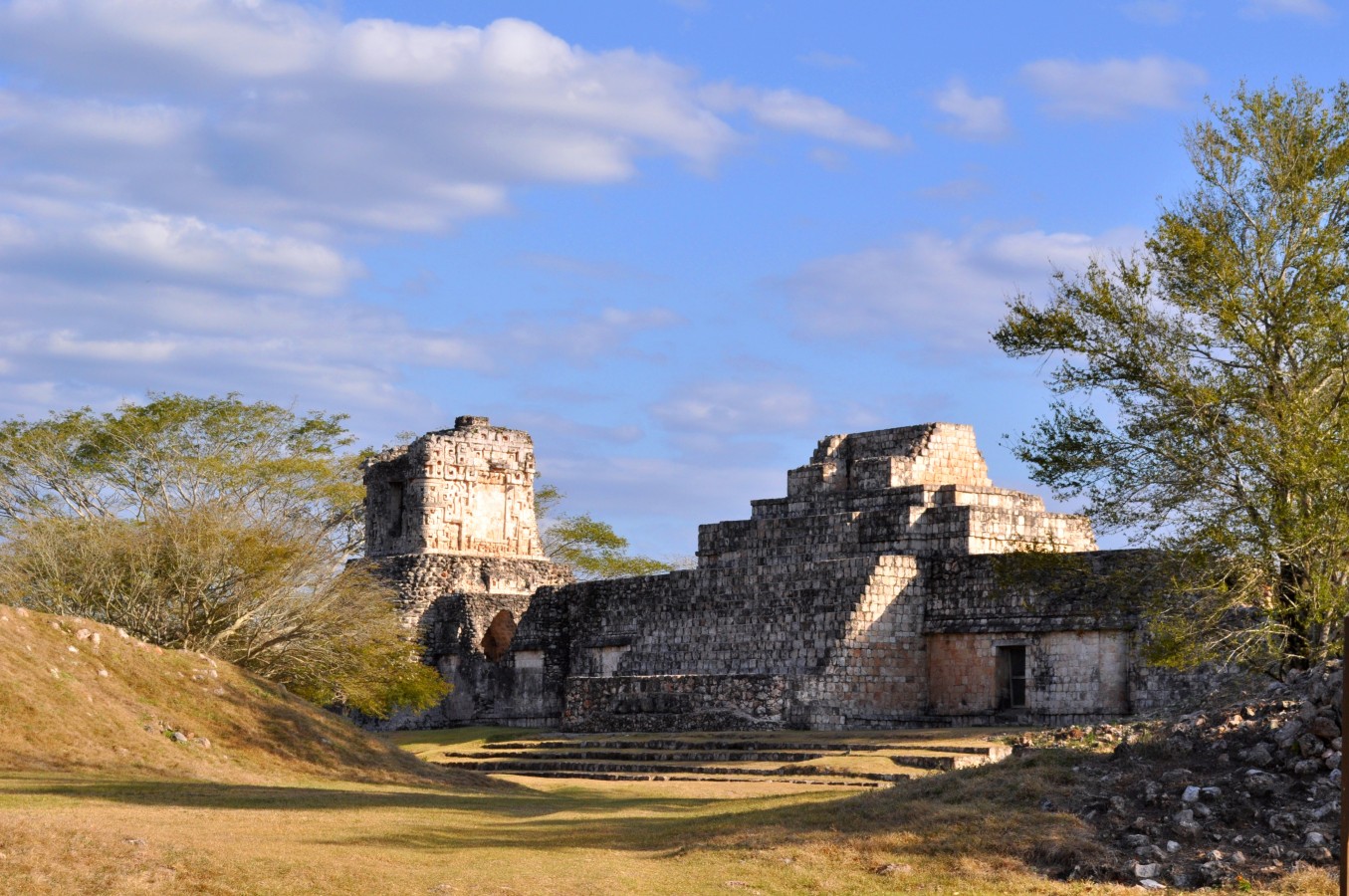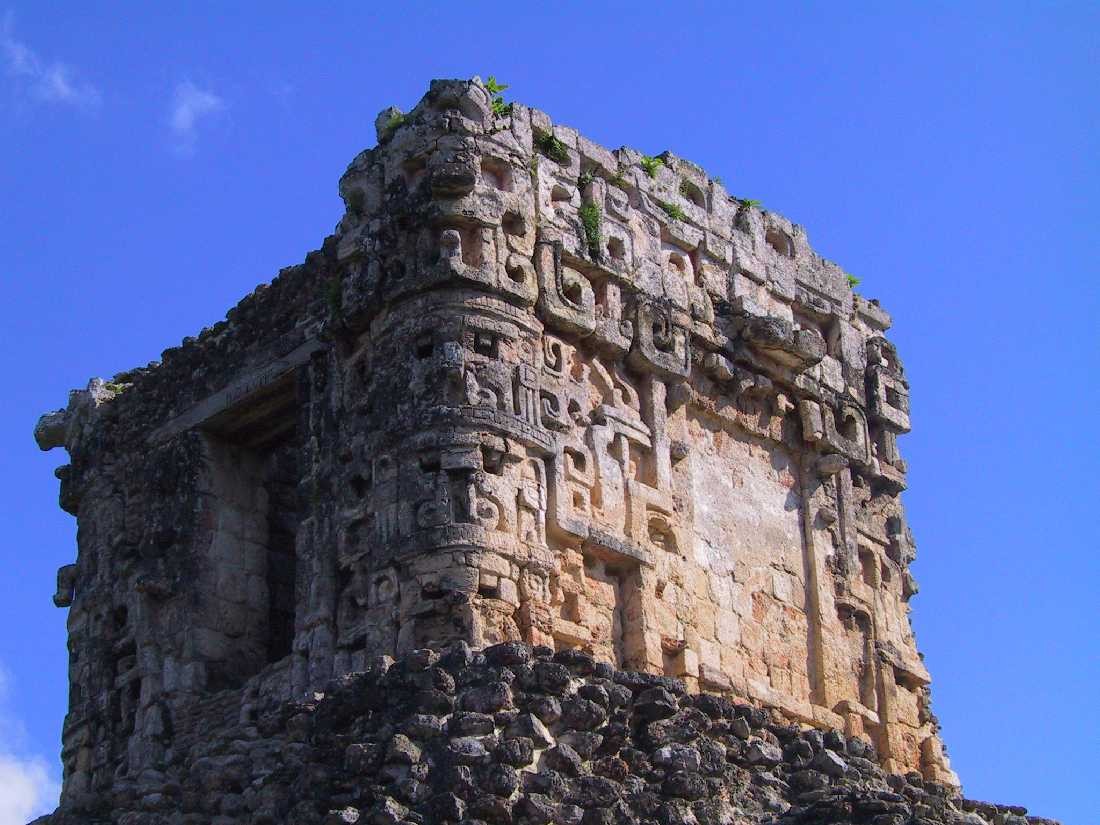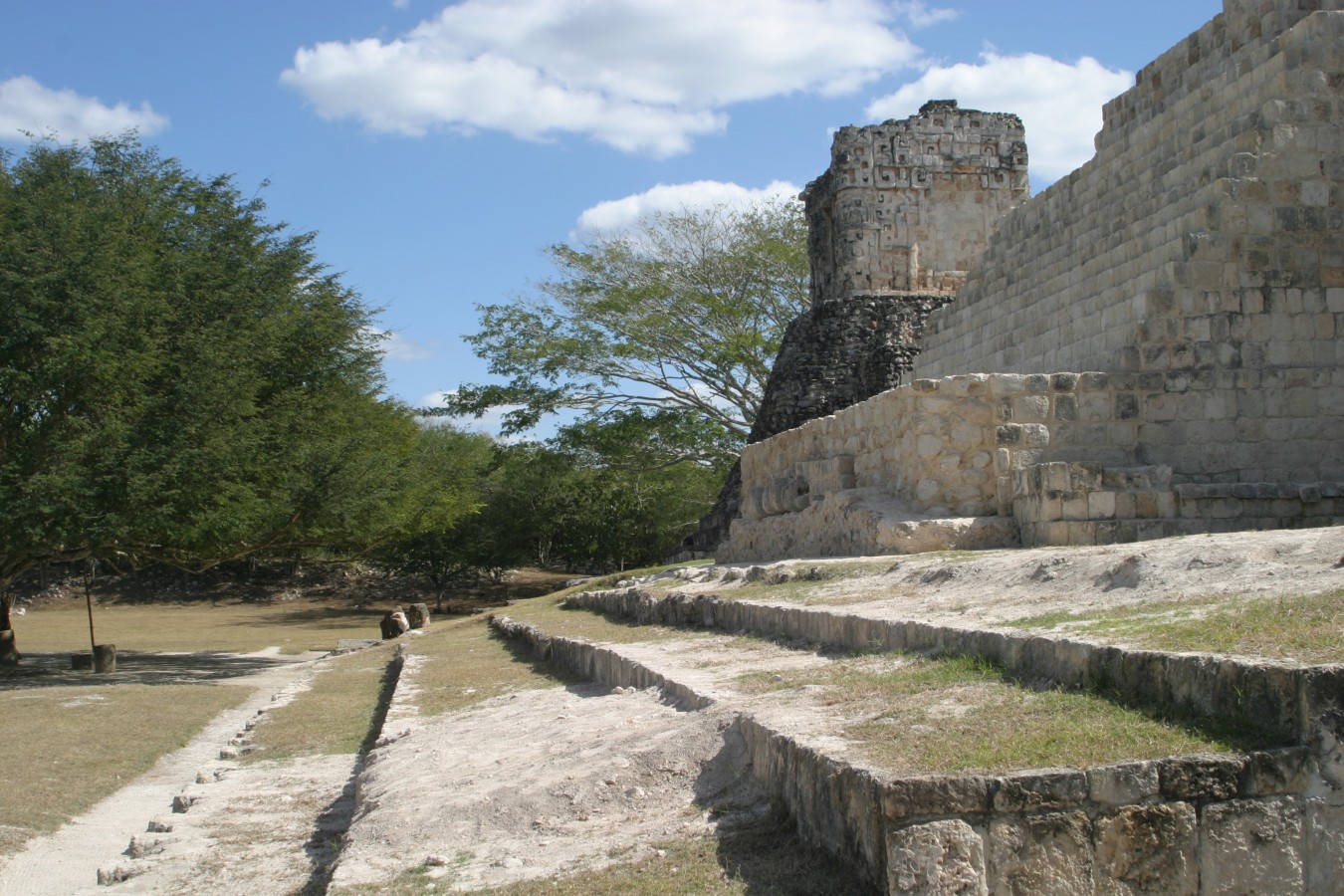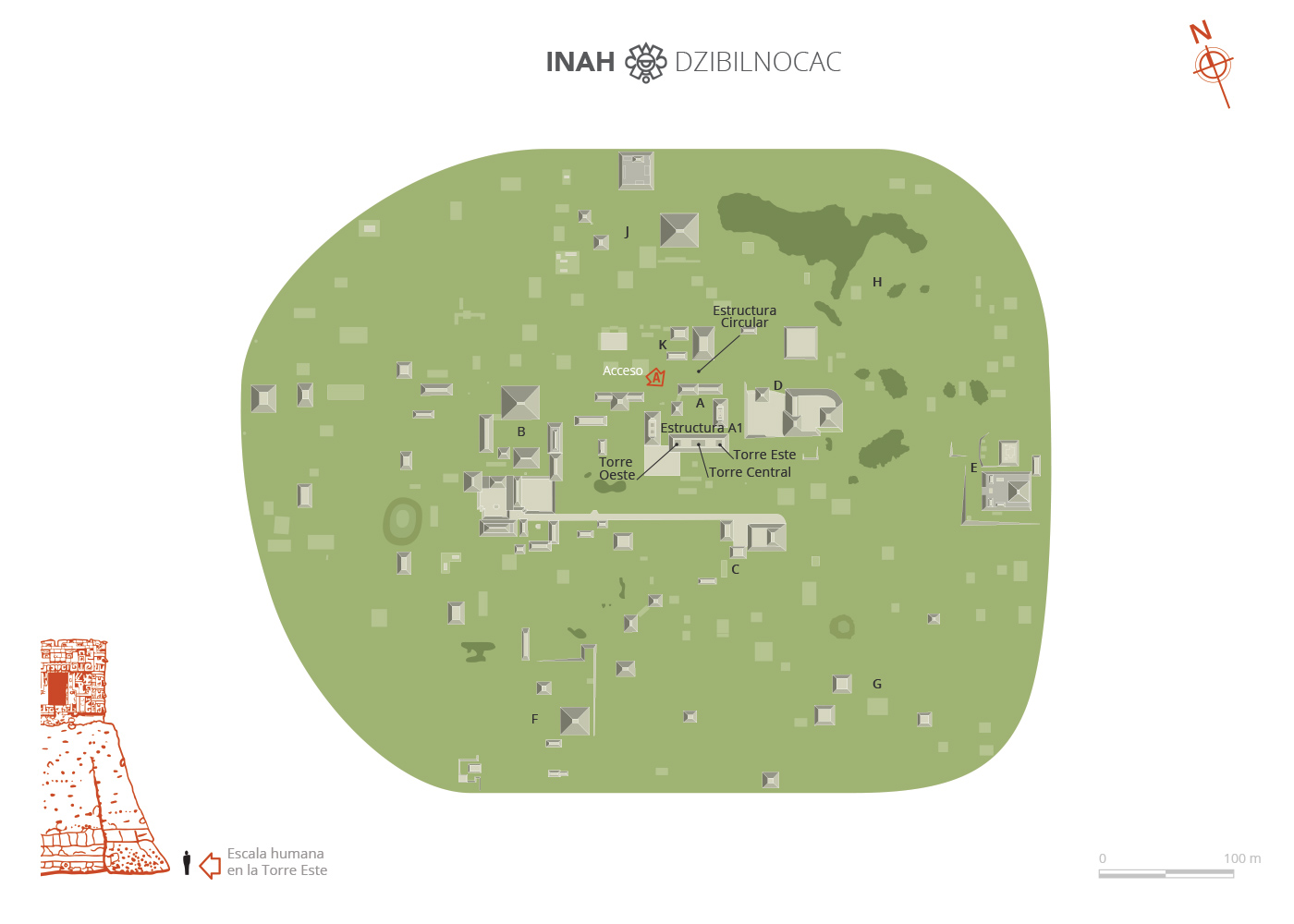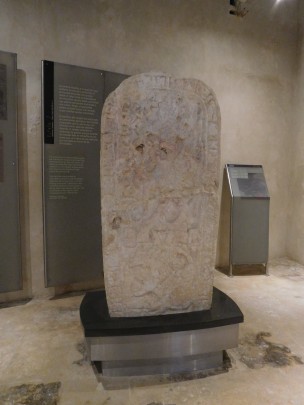Dzibilnocac
Painted vault
The legacy of the past grandeur of this site is an expansive plaza and splendid buildings, some decorated with carved masks. Remains of paintings have also been found, showing hieroglyphs and gods of the Maya pantheon.
About the site
The ancient inhabitants built Dzibilnocac on an extensive plain, and so the city has an urban layout consisting of a set of interconnected patios and plazas. The most voluminous structures are found predominantly in the central Chenes region, meaning that the settlement’s territorial expanse has particular construction characteristics, while the urban growth radiates out from the center, simulating circles, with diminishing volumes and architectural quality until reaching the rural areas. The earliest signs of human inhabitation are dated to approximately between 500 and 50 BC. The fertile ground made the area suitable for an agricultural and sedentary society. The central part of the site was inhabited by the lords or governors, as well as by nobles, priests and other members of the high-ranking classes. Dzibilnocac was a regional capital, and in common with many other cities, which also controlled the goods and resources of their territories, it would have received tributes from the areas it had subjugated. The site’s decline has been dated to around the year 1000 AD.
Map
Did you know...
- In February 1842, the explorers Frederick Catherwood and John L. Stephens visited the town of Iturbide and some pre-Hispanic ruins that would later become known as Dzibilnocac.
- The Caste War was the longest-running indigenous movement in this area, and posed a genuine threat to the status quo—the rebellion very nearly proved victorious.
- The game board discovered recently at the site resembles a “quincunx,” the symbol representing the universe through one central point that is identified with the Earth, four indicating the cardinal points, and a frame representing the cosmos.
Practical information
Monday to Sunday from 8:00 to 17:00 hr. Last entry 16:45 hrs.
Free entry
Se localiza a 150 kilómetros al oriente de la ciudad de Campeche.
The distance to Dzibilnocac from the city of Campeche is 154 kilometers. It is located southeast of Campeche, on Federal Highway 261 for Hopelchén. From there take the road leading to the town of Dzibalchén, followed by the exit for the town of Vicente Guerrero (Iturbide). The archeological site is 300 meters from the town square.
Services
-
+52 (981) 816 8179
-
This email address is being protected from spambots. You need JavaScript enabled to view it.
-
FACEBOOK
-
TWITTER
Directory
Encargada de Operación de Zonas Arqueológicas del Centro INAH Campeche
This email address is being protected from spambots. You need JavaScript enabled to view it.
+52 (981) 816 9111, exts. 138016 y 138017



